Introduction To Penguins: Unique Features And Behaviors
At first glance, penguins may seem like odd creatures. They waddle instead of walk, they can’t fly despite having wings, and they live in some of the coldest and harshest environments on the planet. However, upon closer inspection, one can appreciate the uniqueness and adaptability of these beloved birds. With their distinctive coloration, swimming abilities, and communal behavior, penguins have captured the hearts of people all over the world.
One of the most recognizable features of penguins is their black and white tuxedo-like appearance. This distinctive coloration helps them blend in with the water while swimming, as well as camouflage them from predators such as leopard seals and orcas. In addition, penguins are known for their adeptness in the water. They are streamlined for swimming and can reach speeds of up to 22 miles per hour. Penguins are also able to dive to great depths – the emperor penguin, for example, can dive up to 1,800 feet deep!
- Well-known for swimming and diving capabilities.
- Adapted for living in harsh environments such as the polar regions.
- Black and white coloration serves as camouflage and allows for easy identification within a colony.
Penguins are also social creatures and live in large colonies. They form monogamous pairs during the breeding season, and both parents take turns incubating the eggs and caring for the chicks. Penguin colonies are raucous places, with a cacophony of vocalizations that help individuals locate their mates and chicks.
- Breed in monogamous pairs.
- Participate in communal vocalizations.
- Share parental duties equally.
There are many different species of penguins, each with their own unique features and behaviors. From the emperor penguin, which is the largest and most majestic of all penguins, to the little penguin, which is the smallest and only penguin species natively found in Australia, each species contributes to the fascinating world of penguins.
| Name of Penguin | Unique Features |
|---|---|
| Emperor Penguin | Largest and most majestic. Incubates egg on feet during winter. |
| Little Penguin | Natively found in Australia. Smallest of all penguins. |
| African Penguin | Endangered. Grey and white plumage. |
| Chinstrap Penguin | Hardy and resilient. Identifiable chin strap. |
In conclusion, penguins are fascinating creatures with unique features and behaviors. From their swimming and diving capabilities to their monogamous pairs and communal vocalizations, there is much to admire about these birds. And with so many different species, there is always something new to discover about the world of penguins.
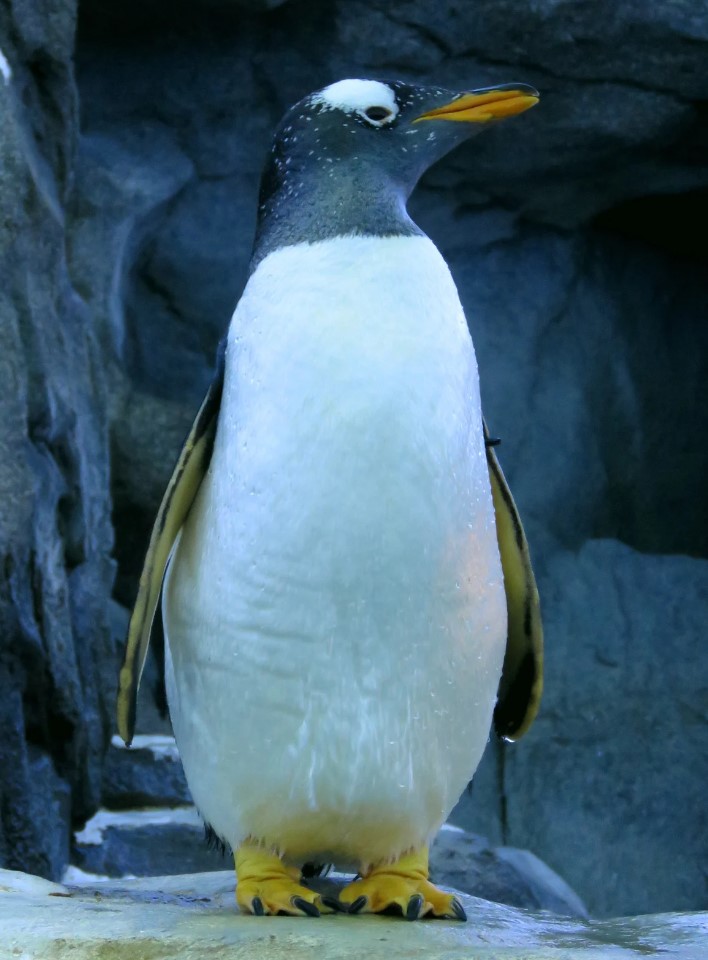
Different Kinds Of Penguins: Antarctic, Subantarctic, And Temperate
Penguins are beloved creatures that can be found across the world, from Antarctica to temperate regions. But did you know that there are different kinds of penguins that are adapted to their unique environments? Understanding the various types of penguins is essential to appreciating the intricacies of their behaviors and survival mechanisms. Three main kinds of penguins are the Antarctic, Subantarctic, and Temperate penguins, each with their own unique traits.
Antarctic Penguins: These penguins are known for their resilience in the harshest conditions on Earth. Species such as the Emperor, Adelie, Chinstrap, and Gentoo penguins are all found in the frigid climate of Antarctica, where they must navigate through sea ice and freezing temperatures. The Emperor penguin, the largest of all penguins, is perhaps the most iconic of the Antarctic penguins, known for their dramatic mating rituals and the heroic journey made by each parent to protect and nurture their young.
Subantarctic Penguins: These penguins, such as the Rockhopper, Macaroni, and Royal penguins, are found on islands and in coastal regions that are close to the Antarctic but are slightly warmer. The Rockhopper and Macaroni penguins are known for their unique feather crests and their habit of nesting in rocky, hard-to-reach cliff areas. The Royal penguins, on the other hand, prefer living in large colonies and can be found in the southern Indian Ocean.
Temperate Penguins: These penguins are the most diverse and can be found in a variety of temperatures and climates. The Little Penguin, or Fairy Penguin, is the smallest of all penguins and is natively found in Australia, living in burrows along the coast. African Penguins, with their distinctive black-and-white plumage, are found on the southwestern coast of Africa and are endangered due to habitat loss and human activity. Galapagos Penguins, the only penguins to live near the equator, may not be as well-known as their Antarctic counterparts, but they are just as fascinating in their ability to adapt to the warm waters surrounding the islands.
| Penguin Type | Location | Notable Features |
|---|---|---|
| Antarctic Penguins | Antarctica | Largest penguins, resilient in harsh conditions |
| Subantarctic Penguins | Islands and coastal regions near Antarctica | Rockhopper and Macaroni penguins have feather crests, Royal penguins prefer living in large groups |
| Temperate Penguins | Various regions including Australia and southwestern Africa | Little Penguins are the smallest, African Penguins are endangered, Galapagos Penguins live near the equator |
Each type of penguin has adapted to its environment in unique ways, proving these flightless birds to be some of the most interesting and captivating creatures on the planet. The next time you see a penguin, take a moment to observe its characteristics and appreciate the challenges it has overcome to thrive in its own unique ecosystem.
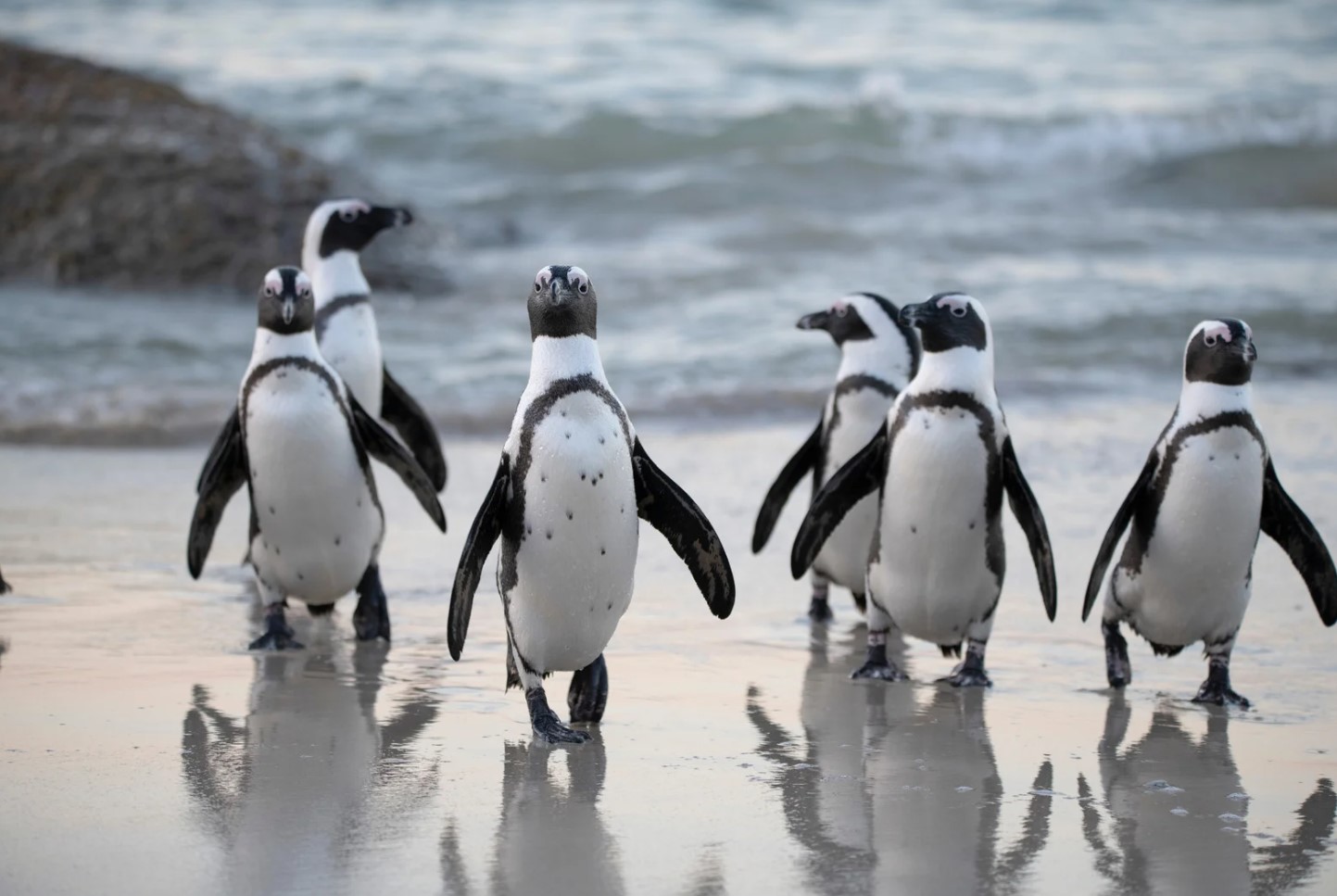
Emperor Penguins: Largest And Most Majestic Of All Penguins
The Emperor Penguin is the largest and most majestic species of penguins found in Antarctica. These flightless birds are known for their unique adaptations to the harsh environment of their habitat, including their feathers, body shape, and overall behavior.
One of the most significant features of Emperor Penguins is their size. They can grow up to 4 feet tall and weigh up to 90 pounds, making them the largest penguin species on Earth. They have a thick layer of insulating feathers that provide them the necessary warmth in Antarctic temperatures, which can occasionally drop to -40℃. This insulation also helps them to stay buoyant while swimming, as they spend around 75% of their lives in the water.
Emperor Penguins are also known for their unique social behaviors. During the breeding season, they gather in huge colonies of up to thousands of individuals. Each pair of penguins takes turns to incubate their egg, while the other hunts for food in the ocean. They communicate through a range of vocalizations, including trumpeting, braying, and calls that can be heard up to a mile away.
- Emperor Penguins are the largest species of penguins, growing up to 4 feet tall and weighing 90 pounds.
- They have insulating feathers that provide warmth in extreme Antarctic temperatures.
- Emperor Penguins spend around 75% of their lives in the water and are skilled swimmers.
- During the breeding season, they gather in huge colonies, with each pair taking turns to incubate their egg.
- Emperor Penguins communicate through a range of vocalizations that can be heard up to a mile away.
In conclusion, the Emperor Penguin is a fascinating and majestic creature that has evolved unique adaptations to survive in the harsh environment of Antarctica. Their large size, insulating feathers, and social behaviors set them apart from all other species of penguins. With their increasing vulnerability to climate change and human threats, it is essential to protect and conserve these magnificent birds for future generations to enjoy and appreciate.
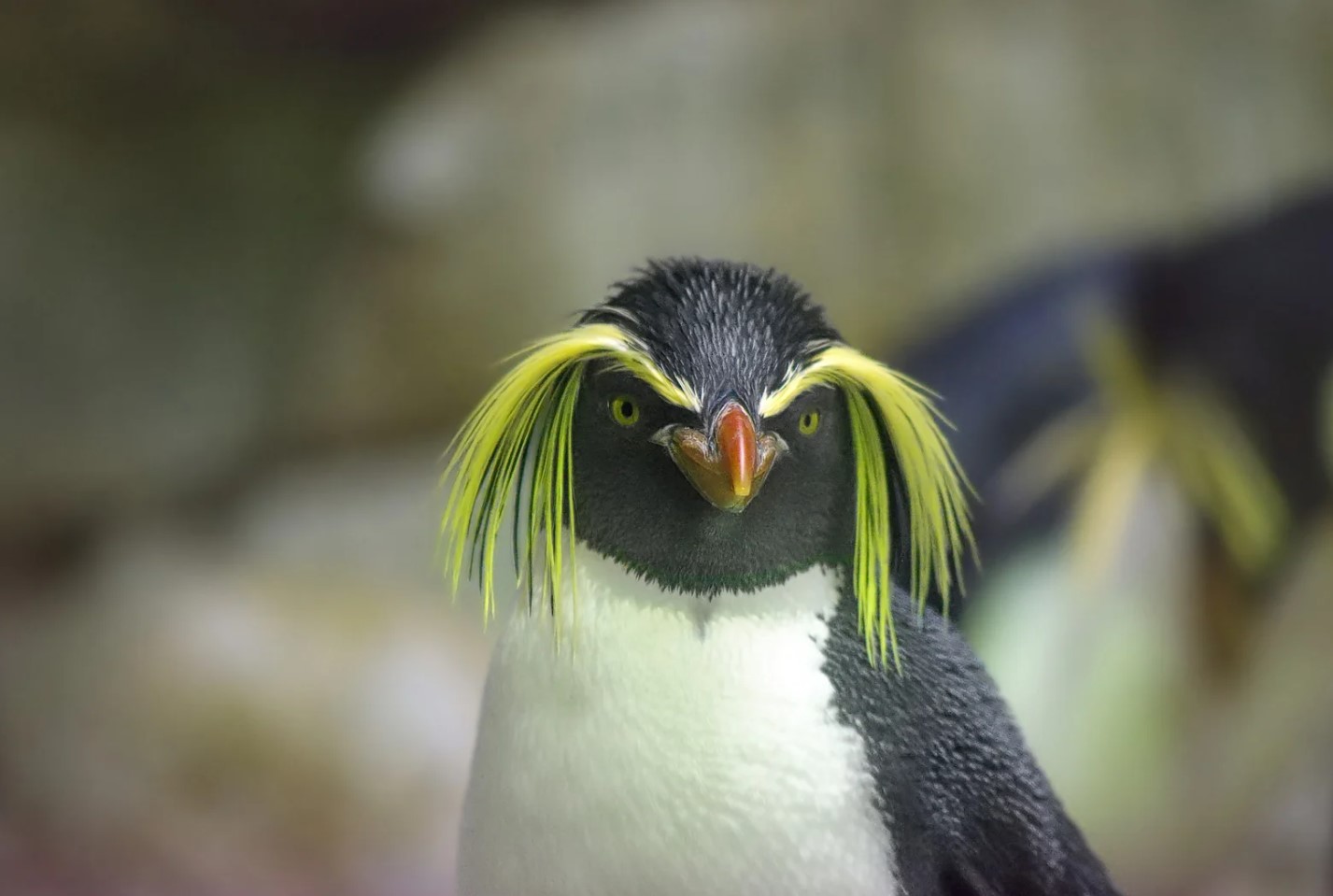
Adelie Penguins: Agile And Skillful Hunters İn The Antarctic
Adelie Penguins are one of the most famous penguin species out there. These wonderful creatures are agile and skillful hunters in the Antarctic, and they have adapted to live in this particular region incredibly well. Not only are they fast swimmers, but they are also able to dive down to great depths in search of their prey. The Adelie Penguin is a true marvel of nature and has many unique features that set it apart from other penguin species. In this blog post, we will explore the characteristics and behaviors of the Adelie Penguins.
One of the most distinctive features of the Adelie Penguin is its small size. They are typically around two feet tall and weigh between six and eight pounds. This size makes them perfectly suited to their environment and allows them to move around freely without too much difficulty. Another unique feature of the Adelie Penguin is its distinctive black and white plumage. This coloration serves as camouflage in the Antarctic and helps them evade predators while hunting.
- While Adelie Penguins are known for being skillful hunters, they are also highly social creatures.
- They live in colonies that can number in the thousands and are highly organized when it comes to hunting and breeding.
- Male and female Adelie Penguins take turns incubating their eggs and caring for their young until they are old enough to fend for themselves.
| Characteristics | Behavior |
|---|---|
| Black and white plumage | Hunting in organized groups |
| Small size | Laying eggs and raising chicks |
| Agile and skillful | Diving to great depths to search for prey |
Adelie Penguins are incredible creatures that have adapted to live in one of the harshest environments on earth. They are agile and skillful hunters in the Antarctic and have many unique features that set them apart from other penguin species. Through their behaviors and characteristics, they serve as a symbol of resilience and adaptability in the face of adversity. It is our duty to protect these fascinating creatures and their fragile ecosystem, as they are an essential part of our planet’s biodiversity.
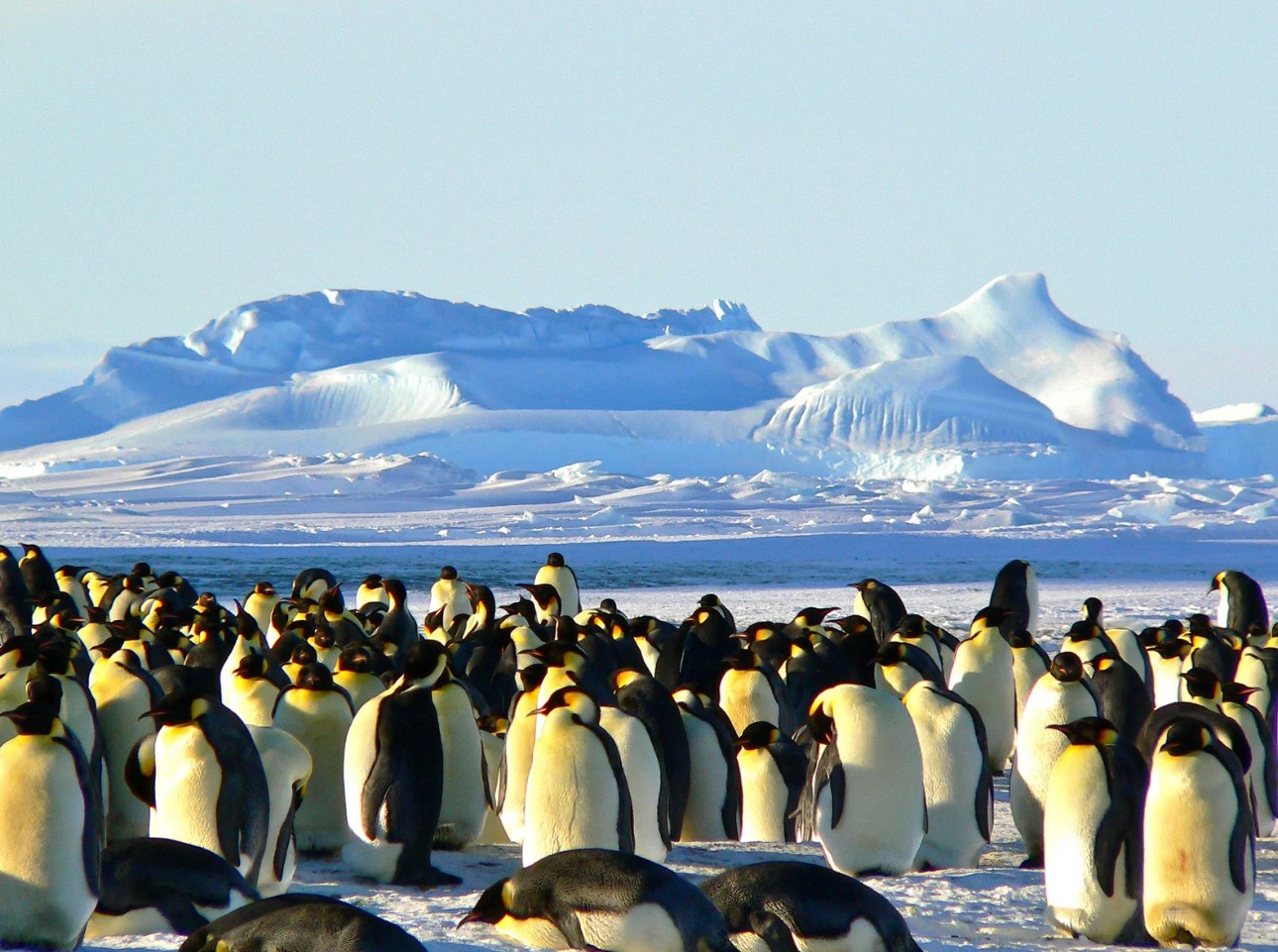
African Penguins: Endangered Species With Unique Grey And White Plumage
African Penguins are a species of penguins that are endemic to South Africa and Namibia. These birds are also known as the jackass penguins, due to their braying call that resembles that of a donkey. One of the unique features of African Penguins is their distinctive grey and white plumage, which helps them camouflage themselves while swimming in the ocean. Unfortunately, African Penguins are an endangered species, with their population declining rapidly in recent years due to human intervention and other environmental factors.
There are many causes that have led to the decline in the number of African Penguins in the wild. Overfishing is one of the primary reasons, as it reduces the availability of prey for these birds, causing them to travel further in search of food. This, in turn, exposes them to the dangers of oil spills and other pollutants in the ocean. Human encroachment on their natural habitats has also played a role, as development projects and tourism have led to the destruction of breeding grounds for these birds.
In recent years, various conservation efforts have been made to protect African Penguins from further population decline. Organizations such as SANCCOB (Southern African Foundation for the Conservation of Coastal Birds) have been working tirelessly to rehabilitate injured penguins, as well as to monitor and protect breeding colonies. Many eco-tourism projects have also been set up, which allow visitors to observe and learn about these fascinating creatures, while also raising awareness about their plight and the importance of conserving their habitats.
- Interestingly, African Penguins are not the only penguins species that are threatened or endangered. Adelie Penguins, for example, are also facing similar challenges due to climate change, while the Galapagos Penguins are affected by oceanic disturbance and El Niño events.
- If you are interested in learning more about African Penguins and other penguin species, consider visiting a zoo or aquarium that has penguins as part of its exhibit. You can also support conservation efforts by making a donation or volunteering with organizations that work to protect these incredible creatures!
| Name | Scientific name | Population |
|---|---|---|
| African Penguin | Spheniscus demersus | 13,000 breeding pairs |
| Galapagos Penguin | Spheniscus mendiculus | 1,200 individuals |
| Adelie Penguin | Pygoscelis adeliae | 2.5 million |
In conclusion, African Penguins are a unique and endangered species of penguins that represent the fragility of our planet’s ecosystems. By supporting conservation efforts and raising awareness about the importance of protecting these incredible birds, we can ensure that they continue to thrive and inspire future generations. Let’s work together to make a difference and save the African Penguins!
Galapagos Penguins: Only Penguins That Thrive İn Warm Waters
Galapagos Penguins: Only Penguins That Thrive İn Warm Waters
When you think of penguins, you might imagine them living in icy conditions. But did you know that there is one species of penguin that thrives in warm waters? Say hello to the Galapagos Penguins! These little birds are the only penguins that live on the equator, and they are found exclusively in the Galapagos Islands.
- Physical Characteristics: Galapagos Penguins are the smallest of all penguin species, weighing only around 5 pounds on average. They have distinctive black and white plumage, with a black band that runs across their chest. Their feet and beaks are pink, and they have a white patch above each eye.
- Habitat and Behavior: These penguins are only found on the Galapagos Islands, where they live in rocky areas along the coast. They are expert swimmers, and can dive to depths of up to 100 ft. to catch fish and squid. Unlike other penguins, Galapagos Penguins do not form large colonies, and instead live in pairs or small groups.
- Conservation Status: Unfortunately, despite their unique adaptation to warm waters, Galapagos Penguins are still facing threats from habitat destruction, overfishing, and climate change. The population has declined significantly in recent years, and they are now classified as an endangered species.
So next time you think of penguins, don’t forget about the little guys who call the equator their home. The Galapagos Penguins are a fascinating and important species, and their survival is crucial to the health of the Galapagos Islands ecosystem.
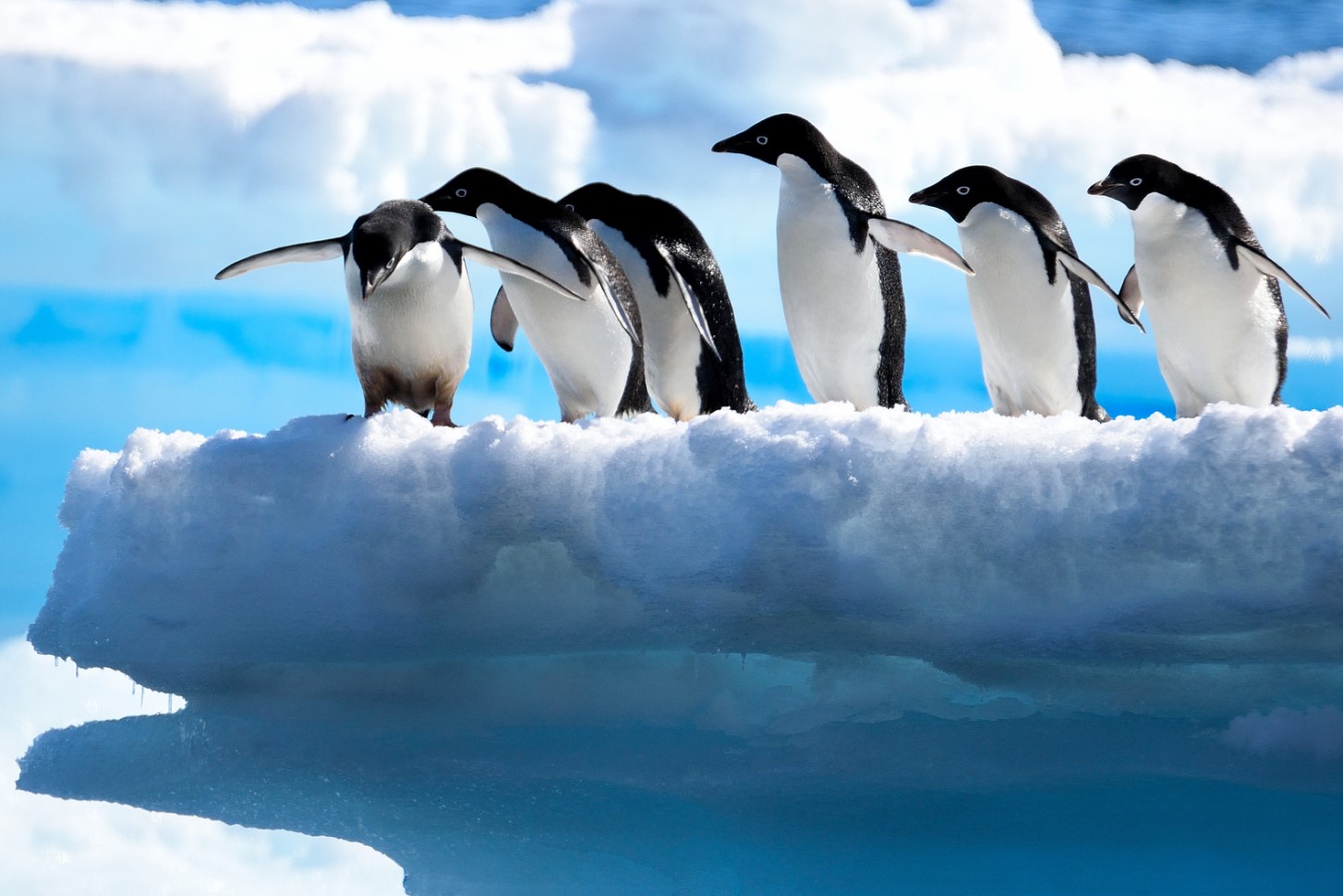
Little Penguins: Smallest And Only Penguin Species Natively Found İn Australia
Little Penguins, also known as Fairy Penguins, are the smallest and the only penguin species natively found in Australia. These adorable birds have distinctive blue and white feathers, and can only be found in the coastal waters, islands, and shorelines of Southern Australia, Tasmania, and New Zealand. Despite their small size, Little Penguins are known for their impressive swimming and diving abilities that allow them to hunt for fish and crustaceans for survival. In this blog post, we’ll take a closer look at the unique features and behaviors of Little Penguins, and learn more about their fascinating lives.
One of the unique features of Little Penguins is their small size. On average, they only stand about 30 centimeters tall and weigh around one kilogram. They have distinctive blue and white feathers that help them blend in with the ocean waves and protect them from predators. Little Penguins also have a specific molting pattern, where they shed their old feather coat and grow new feathers, which takes about three to four weeks to complete.
- Another fascinating behavior of Little Penguins is their social structure. They form large colonies, where they mate, nest, and raise their young together. During the breeding season, male and female penguins take turns incubating their eggs, which can take up to 32 days to hatch. Once the chicks are born, both parents take care of them until they are strong enough to leave the nest, usually after about two months.
- To survive in their natural habitat, Little Penguins have developed unique swimming and diving skills. They can swim up to 50 kilometers a day, diving up to 60 meters deep to catch their prey. To conserve energy, they tuck their wings tightly to their sides and use their flippers to propel themselves through the water. Little Penguins also have a special gland that helps them desalinate seawater, which allows them to go without drinking for weeks.
| Common Name | Scientific Name | Location |
|---|---|---|
| Little Penguins | Eudyptula minor | Australia, New Zealand |
Despite their adorable appearance, Little Penguins face many threats, including habitat loss, marine pollution, and climate change. However, thanks to conservation efforts, their populations are slowly recovering, and ecotourism activities, such as guided tours and penguin watching, have become popular in Australia and New Zealand. Little Penguins are a valuable symbol of our planet’s biodiversity, and remind us of the importance of protecting and preserving our natural world.
Magellanic Penguins: Social Birds With Noisy Calls And Distinctive Black Stripes
Magellanic Penguins are a species of penguin that live in the South Atlantic, primarily in Argentina, Chile, and the Falkland Islands. They are named after Ferdinand Magellan, the Portuguese explorer who first spotted them in 1520 during his circumnavigation of the globe. These social birds are known for their distinctive black stripes and are easily recognizable among other penguin species. Magellanic Penguins are quite vocal and make a variety of sounds ranging from braying calls to gentle murmurs.
Magellanic Penguins are social creatures and are known for their strong family bonds. They mate for life and return to the same nesting grounds year after year, where they raise their chicks. They are also quite sociable with other penguins and are often spotted in large groups called colonies. These colonies can range from a few dozen individuals to several thousand.
- Magellanic Penguins are not as well adapted to cold weather as other penguin species and prefer to live in temperate and subtropical climates.
- They feed on small fish like anchovies and sardines, which they catch by diving up to 60 feet underwater.
- Magellanic Penguins are classified as “near threatened” by the IUCN due to habitat loss, oil spills, and overfishing. Efforts are underway to protect their nesting grounds and promote sustainable fishing practices to help ensure their survival.
Magellanic Penguins are fascinating creatures with their distinctive black stripes and unique vocalizations. They serve as a reminder of the fragility of our planet’s ecosystems and the importance of conservation efforts to protect these remarkable creatures for future generations to enjoy.
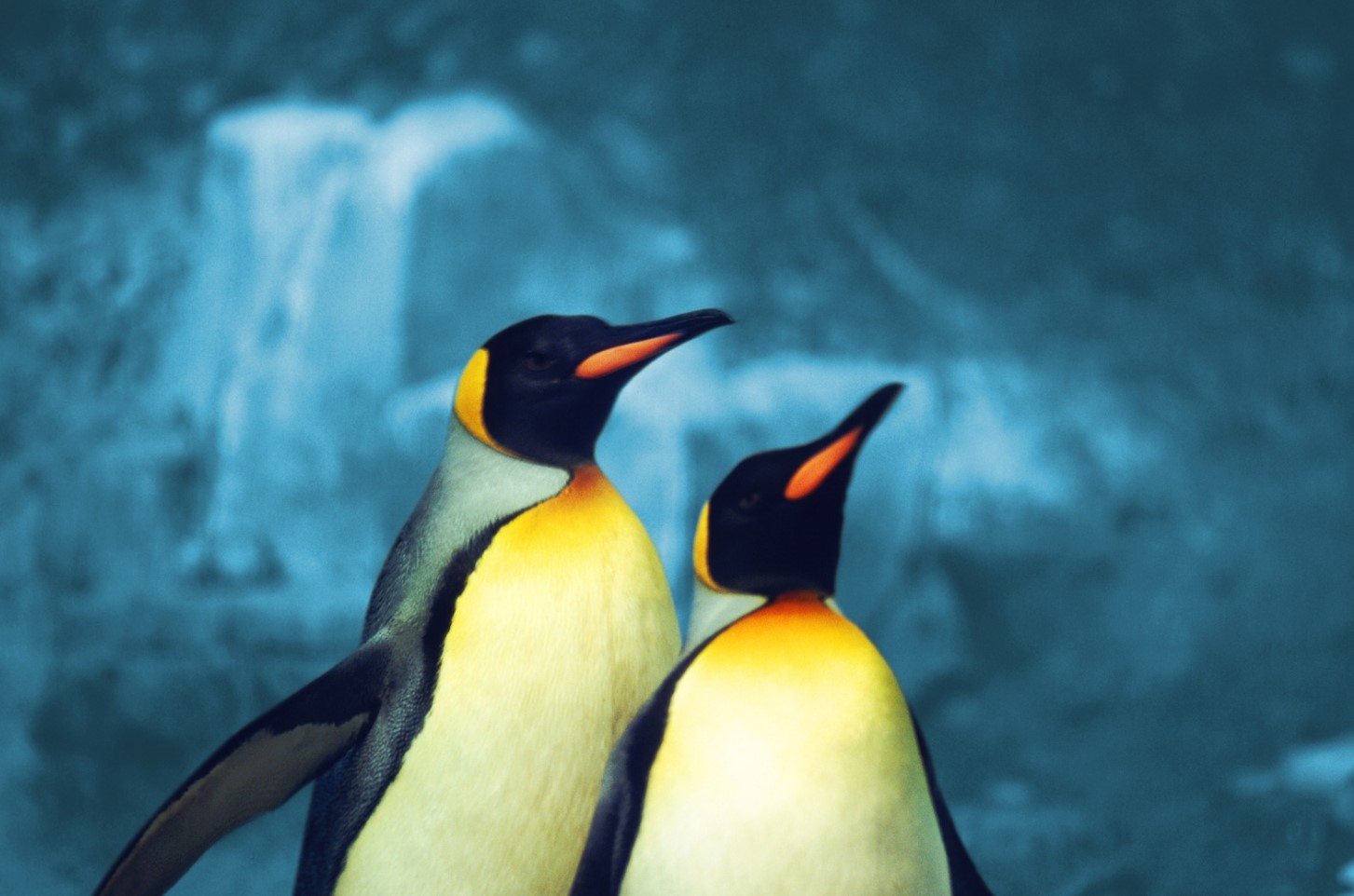
Chinstrap Penguins: Hardy And Resilient Penguins With Identifiable Chin Straps
Chinstrap Penguins are one of the most resilient and hardy species of penguins found in the world. They are a sub-category of penguins that are native to the Antarctic and sub-Antarctic regions. These fascinating birds are so named due to the distinctive black line that runs under their chin, giving an appearance of a chinstrap. Their distinct appearance makes them one of the most recognizable birds of the penguin family.
Chinstrap Penguins are characterized by their small size and slim body structure, making them one of the fastest swimming species of penguins. They are also known for their ability to climb steep, rocky cliffs that other penguins would find hard to reach. They are excellent swimmers and use their small wings to propel themselves underwater, sometimes diving as deep as 70 meters to hunt for prey. Chinstrap Penguins usually feed on krill, squid, and small fish.
- Chinstrap Penguins are excellent survivors and can endure harsh weather conditions that would be detrimental to other animals. They have a unique ability to huddle together for warmth, with each bird taking it in turns to be at the center of the huddle. This behavior ensures that every bird gets a chance to conserve its body heat, even in temperatures that can drop to -40°C (-40°F).
- Chinstrap Penguins are social birds and have a distinct vocalization system that they use to communicate with each other. They have a high-pitched, braying call that can be heard miles away. Scientists believe that this vocalization is used for social bonding, feeding communication, and danger alerts.
However, despite their resilience, Chinstrap Penguins are still facing threats from human activities, including climate change, overfishing, and pollution. As the sea ice decreases, their natural habitat becomes increasingly vulnerable. Therefore, conservation efforts are necessary to ensure that future generations can enjoy the sight of these amazing birds. By observing, studying and protecting these birds, we can learn more about them and appreciate the value they add to our world.
Gentoo Penguins: Fast-Swimming Penguins With A Friendly Disposition
Gentoo penguins are one of the fastest-swimming and most exciting species of the penguin family. They are known for their unique physical characteristics and friendly disposition. These penguins are native to the sub-Antarctic regions, including the Falkland Islands, South Georgia, and the remote islands in the Southern Ocean. They stand out from the other penguin species because of their long tails and bright orange beaks.
Their black and white plumage is distinguishable, with a white patch over their heads and a wide black strip that runs across their throats, making them easily identifiable. Like many other penguin species, Gentoo penguins mate for life, and they are known for their strong bond with their partners. When they are not hunting, they spend their time preening to keep themselves clean and socializing with their fellow penguins.
- Gentoo penguins spend a lot of time in the water
- They are agile swimmers and can reach speeds of up to 22 miles per hour
- They use their strong wings to propel themselves through the water
- They dive deep underwater to hunt for food such as fish, squid, and krill
Gentoo penguins are unique in the sense that they are not afraid of humans and are commonly interacted with in Antarctica, which has made them popular amongst tourists. However, human interaction, particularly through tourism, can be harmful to these penguin species. It is essential that visitors and researchers alike respect these penguins’ boundaries and avoid disturbing them while they are nesting or mating.
It is important to note that these beautiful creatures are also susceptible to climate change, which makes their habitat and source of food increasingly scarce. Melting sea ice and rising temperatures are threatening the lives of these penguins who rely on the ocean’s frigid waters to survive. As a result, conservation efforts have been put in place to preserve their habitat and their future as a species.
| Gentoo Penguins | |
|---|---|
| Scientific Name | Pygoscelis papua |
| Length | 20-36 inches |
| Weight | 8-14 pounds |
| Diet | Fish, squid, krill |
In conclusion, Gentoo penguins are fascinating creatures with unique physical characteristics, friendly disposition, and impressive swimming abilities. While they are not currently endangered, they are susceptible to the effects of climate change and human interaction. As such, it is important to respect their environment and take concrete conservation efforts to ensure their survival for generations to come.
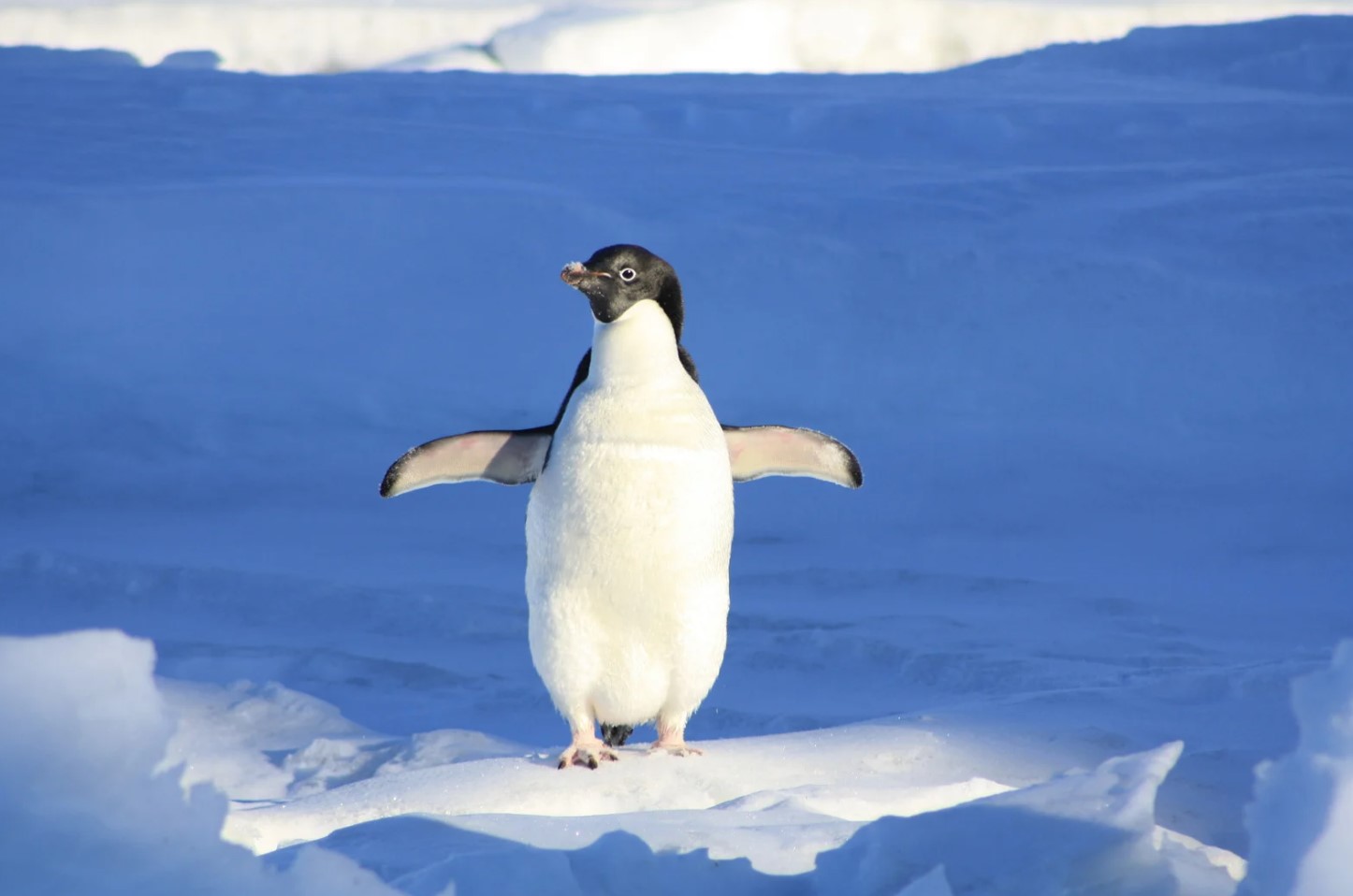
Rockhopper Penguins: Adventurous Birds That Nest On Rocky Cliffs And Steep Slopes
Rockhopper Penguins are among the most fascinating creatures that can be found in the Southern Hemisphere. These birds are widely renowned for their appearance, which is characterized by a crest of spiky yellow feathers on their heads that adds an extra edge to their already adorable features. While Rockhoppers may not be as well-known as their larger cousins, they have a unique history and fascinating behavioral patterns that make them stand out from the other penguins.
Rockhopper Penguins are known for being extremely adventurous birds that take on some of the toughest terrain in the world. These creatures inhabit some of the most remote islands and cliffs in the Southern Ocean, and their ability to climb steep slopes and rocky outcrops is something that makes them truly stand out from the crowd.
Social behavior is also a key feature of Rockhopper Penguins. These creatures often live in colonies of hundreds to thousands of individuals, and their noisy calls and distinctive black and white plumage make them easy to spot in their natural habitat. They can often be seen engaging in activities such as preening, courting and feeding.
- Rockhopper Penguins subspecies include:
- Southern Rockhopper Penguin
- Eastern Rockhopper Penguin
- Western Rockhopper Penguin
- Northern Rockhopper Penguin
Despite their adventurous and hardy nature, Rockhopper Penguins are also facing several threats that pose a risk to their survival. These threats include human activities such as oil spills, overfishing, and habitat destruction, which can have a devastating impact on their populations. Fortunately, there are conservation efforts underway to protect these wonderful creatures. With ongoing education, research, and rescue efforts, we can help ensure that Rockhopper Penguins continue to thrive and enchant us for generations to come.
Macaroni Penguins: Flamboyant Penguins With Curved Orange And Yellow Feathers
Macaroni penguins may not be the largest penguin species, but they are certainly one of the most flamboyant. With their distinctive curved orange and yellow feathers above their eyes, it’s difficult to mistake them for any other species of penguin. These birds are primarily found in the sub-Antarctic regions, on islands such as South Georgia, the Falklands, and Macquarie Island, which is located off the coast of Australia.
Macaroni penguins are medium-sized penguins, standing up to two feet tall and weighing around 13 pounds. They belong to the crested penguin family and are closely related to other species such as rockhopper penguins and northern and southern royal penguins. One of the interesting things about macaroni penguins is that they have a distinctive call – a braying sound that can be heard from far away.
These penguins breed in large colonies, with some colonies numbering in the hundreds of thousands of individuals. During breeding season, the males develop a bright yellow crest, which they use to attract mates. Macaroni penguins typically lay two eggs per breeding season, and both parents help to incubate the eggs and care for the chicks.
- Macaroni penguins are known for their unique feathers above their eyes.
- They primarily reside in the sub-Antarctic regions on islands such as South Georgia, the Falklands, and Macquarie Island.
- They are medium-sized and weigh around 13 pounds.
| Characteristic | Fact |
|---|---|
| Size | Up to two feet tall |
| Weight | Around 13 pounds |
| Call | Braying sound |
| Breeding Habits | Lay two eggs per breeding season, both parents incubate and care for the chicks |
Overall, macaroni penguins are a fascinating species of penguin. From their unique feathers to their braying call and large breeding colonies, they stand out from their fellow penguin species. Unfortunately, like many penguin species, they face threats such as climate change, overfishing, and pollution. As humans, it is crucial that we do our part to protect these amazing creatures and their habitats.
History Of Penguins: Evolution, Exploration, And Conservation Efforts
The history of penguins is a fascinating and complex one, with these charismatic birds having evolved over millions of years to become the unique creatures we know today. In prehistoric times, penguins were quite different from their modern counterparts, with some species growing to massive sizes and featuring long, sharp beaks. Over time, these creatures evolved to better suit their environments, developing streamlined bodies, webbed feet, and insulating feathers that keep them warm in even the harshest of conditions. Today, penguins can be found all across the world, from the icy Antarctic to the warm waters of the Galapagos and beyond.
Despite their widespread popularity and admiration, penguins have faced significant threats from humans, including habitat loss, overfishing, and climate change. In recent years, numerous conservation efforts have been established to help protect these beloved birds and ensure that they can continue to thrive in the wild. These efforts range from research projects aimed at better understanding penguin populations to ecotourism initiatives focused on sustainable tourism practices that support local communities and the environment.
In addition to these efforts, many individuals and organizations are working to raise awareness about the plight of penguins and the importance of protecting their habitats. Through education and outreach programs, these advocates are helping to promote a greater understanding of these remarkable birds and the many challenges they face in the modern world. By coming together and working towards a common goal, we can help safeguard the future of penguins and ensure that these amazing creatures continue to inspire us for generations to come.
Human Interaction With Penguins: Research, Ecotourism, And Threats To Penguins
Human Interaction With Penguins: Research, Ecotourism, And Threats To Penguins
Humans have long been fascinated by penguins. Whether it’s their unique features, behaviors, or simply their adorable looks, people from all over the world are drawn to these flightless birds. Sadly, human activities have also put penguins at risk. Over the years, researchers have studied penguins to learn more about their behavior, physiology, and ecology. Meanwhile, ecotourism has emerged as a popular way for people to see penguins up close, often with limited impact on their environment. However, human activities such as fishing, pollution, and climate change continue to threaten penguin populations in many parts of the world.
Research on penguins has revealed many fascinating things about these birds. For example, scientists have learned that penguins have a remarkable ability to stay submerged underwater for extended periods. They have also discovered that penguins can navigate by using the Earth’s magnetic field. Additionally, researchers have studied the effects of climate change on penguins, including changes in their habitat and food sources. Many of these studies have been carried out in the Antarctic, where several penguin species live.
- Ecotourism has become a popular way for people to experience penguins firsthand.
- Some countries have established regulations to minimize the impact of ecotourism on penguin populations.
- Unfortunately, not all forms of interaction with penguins are sustainable or responsible.
Ecotourism has become a major industry in many parts of the world, providing an opportunity for people to get a closer look at penguins in the wild. Many countries have established regulations to ensure that ecotourism activities are carried out responsibly and sustainably. This might involve limiting the number of visitors or requiring guides to follow certain guidelines to reduce their impact on the environment. However, not all forms of interaction with penguins are responsible. For example, some people have been known to disturb penguins while they are nesting or feeding, which can have serious consequences for their survival.
| Threats to penguin populations | |
|---|---|
| Pollution | Chemicals from oil spills or industrial waste can harm penguins and their food sources. |
| Climate Change | Changes in ocean temperatures and sea ice can affect the availability of food for penguins. |
| Fishing | Overfishing can reduce the availability of penguins’ prey and lead to food shortages. |
Despite the efforts of researchers and ecotourism providers, penguins continue to face many threats from human activities. Pollution from oil spills and industrial waste can have serious consequences for penguins and their food sources. Climate change is also having a significant impact on penguins, as changes in ocean temperature and sea ice affect the availability of their prey. Overfishing is yet another threat to penguins, as it can reduce the amount of food available to them. As such, it’s important for people to be aware of the impact that their activities can have on penguins and to take steps to minimize this impact wherever possible.
In conclusion, penguins are fascinating creatures that have captivated the hearts of people all over the world. However, human activities continue to put these magnificent birds at risk. Through research, ecotourism, and responsible behavior, we can help to protect penguins and the fragile ecosystems they inhabit.
Conclusion: Penguins As Fascinating Creatures And Symbols Of Our Fragile Planet
Penguins are truly fascinating creatures that have captured the hearts of people all around the world. They are known for their distinctive appearance, charming personalities, and unique behaviors. From the Antarctic to the Galapagos Islands and beyond, penguins can be found in a variety of locations and habitats. However, despite their widespread popularity, penguins face a number of challenges in the modern world.
One of the most pressing issues facing penguins today is climate change. As temperatures rise and habitats are disturbed, penguins are forced to adapt to new and sometimes inhospitable conditions. In addition, changes in ocean currents and fishing practices can have a profound impact on the availability of food for penguins and other marine animals.
Despite these challenges, there are many efforts underway to help protect penguins and their habitats. Conservation groups, researchers, and governments around the world are working together to study penguin behavior, monitor populations, and develop strategies for preserving these beloved animals for generations to come.
- Penguin conservation efforts have been successful in protecting a number of penguin species from further decline. For example, the African penguin population has stabilized in recent years due to the implementation of a successful breeding program.
- Ecotourism has emerged as a powerful tool for raising awareness about the importance of penguins and their habitats. By taking visitors to see penguins up close, tour operators can educate people about the threats facing these animals and the need to protect them.
- Penguin research is ongoing, with scientists exploring the behavior, biology, and ecology of different penguin species. This information is critical for developing effective conservation strategies and ensuring the long-term survival of these unique animals.
In conclusion, penguins are fascinating creatures that serve as an important symbol of the fragility of our planet. As we work to protect penguins and their habitats, we are also working to preserve the health and well-being of our oceans and the planet as a whole. Whether you’re a wildlife enthusiast, a conservationist, or simply someone who appreciates the beauty and wonder of nature, there are many ways you can get involved and help support penguin conservation efforts. By working together, we can ensure a brighter future for these amazing animals and the world we share.